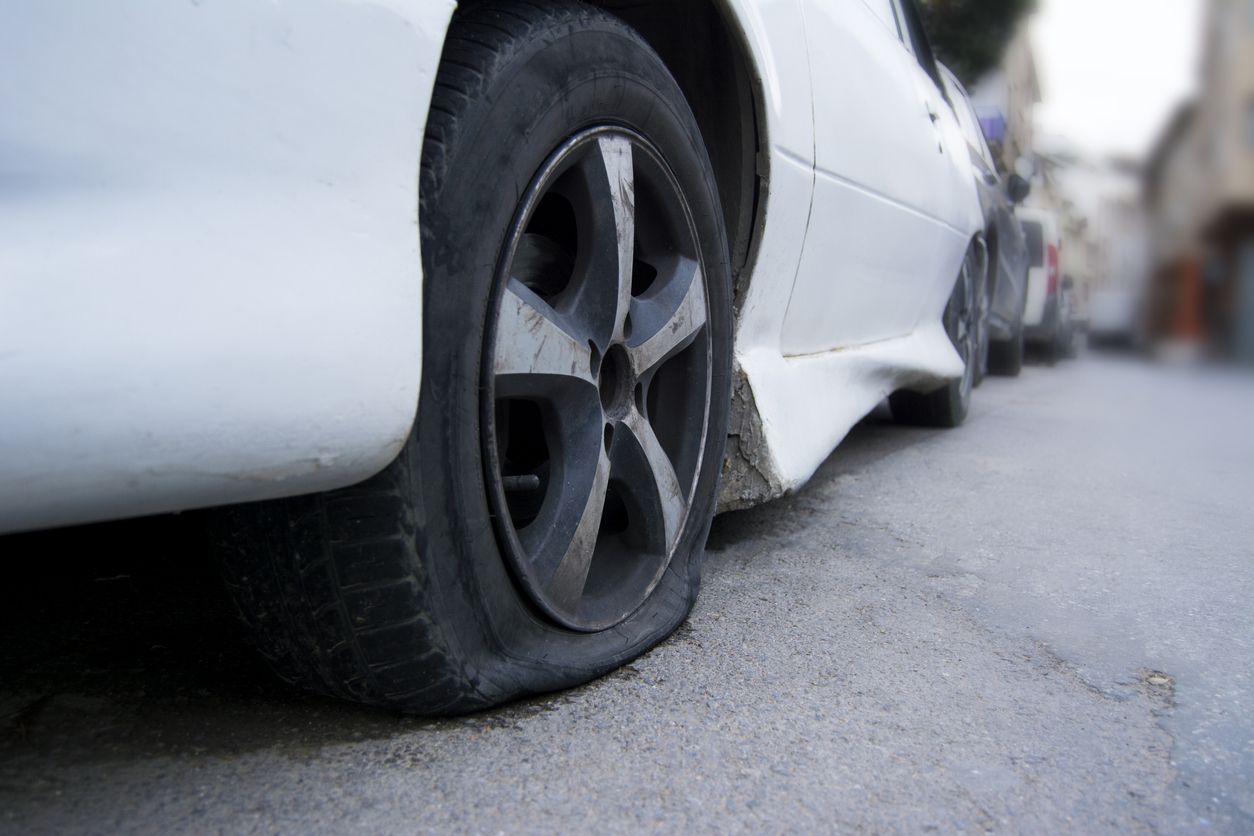5 reasons tyre pressure can drop
Author Name –
Louise Helsby
20 Aug 2019
242 people
Tyre pressure plays an important role in every car’s performance, handling, and fuel economy. Maintaining optimal tyre pressure not only benefits how your car drives though, it’s also a factor in the longevity of your tyres. However, all tyres leak air, whether quickly or slowly, for a variety of reasons. Learning what the main causes of tyre pressure loss are can help you to identify and avoid them, extending the life of your tyres and keeping you safer on the road.

Main causes of tyre pressure loss
Puncture
One of the obvious ways that your tyres can lose air pressure is through a puncture. There are different types of punctures that tyres can sustain – a slow leak puncture will gradually drain your tyre of air while a severe puncture might cause your tyre to blow out right away.
Slow leak punctures can be caused by nails, pins, glass, or any other sharp objects becoming embedded in your tyre while you’re driving. Although these punctures are generally small, they can have a drastic effect on your tyre pressure, causing it to drop by up to 3 PSI per day.
Faulty valve
The tyre valve is the element of your tyre that keeps the air in and allows you to refill the tyre with an air pump. It should be entirely airtight when closed, allowing no air out and perfectly maintaining tyre pressure.
However, a faulty or damaged tyre valve can mean that air is allowed to escape slowly, gradually decreasing your tyre pressure whether your car is moving or not. Over-tightening the valve stem core (the tube within the valve that carries air in to the tyre) can also cause air loss, so if you’re ever replacing your valve stem core, be careful not to over-tighten it.
Damaged tyre bead
The tyre bead is the part of the tyre that is in contact with the wheel itself. It remains in position in a groove on the wheel thanks to air pressure, but it can also be the cause of lost air pressure.
A small piece of debris that manages to get between the wheel rim and the tyre can allow air to escape from the tyre, deflating it slowly. An old tyre may also have a tyre bead that’s degraded or damaged to the point where it leaks air, which is one of the reasons it’s important to check that part worn tyres are in good condition before you buy.
Temperature changes
One of the most common reasons for tyre pressure loss, and the main reason for a tyre losing pressure when there’s no leak, is changes in the temperature of the outside air. Temperature changes affect tyre pressure because of air’s nature – contracting when it’s cooled and expanding when heated.
Tyres can lose up to 2% of their air pressure for each decrease in temperature of around 5.5°C. However, the reverse is also true and an increase in temperature of 5.5°C can raise your tyre pressure by up to 2%.
This can be confusing if you check your tyres in the morning and find they’re underinflated, but by the time you get to the air pump in a petrol station, you find that your tyre pressure has returned to normal. As long as there is no damage to your tyre, rim, or valve, there’s no need to add more air to tyres that lose air pressure due to temperature changes.
Osmosis
The final reason for sustained tyre pressure drops, and the most difficult to diagnose, is osmosis. This scientific term describes a gas’s ability to permeate solids, and in a tyre it means that the air within can exit slowly through the rubber walls.
Tyre pressure loss from osmosis is usually around 1-3 PSI per month, which might not seem like much. However, over the course of several months and combined with other factors, this seemingly innocuous leak can reduce your tyre pressure below optimal levels and begin to affect your car’s performance.
How to maintain tyre pressure
- Avoid hazards on the road – potholes, glass shards, and more can cause losses in air pressure
- Regularly check the tightness of your tyre valve, ensuring that it’s not leaking air
- Perform regular checks on the condition of your tyres, checking for small punctures or damage to the tyre bead
- Routinely add air to your tyres to counter the natural air pressure loss that occurs through osmosis and temperature changes
What are the risks of dangerous tyres?
Every year, dangerous tyres lead to around 5,000 convictions, 900 casualties, and 160 deaths or serious injuries. Not only that, but illegal tyres can actually end up costing you more than the price of a new set: you could face fines of up to £2500 and 3 points on your licence per illegal tyre, not to mention that if you're found to have illegal tyres in an accident, it can invalidate your insurance.
A free tyre check from National can make sure your four wheels are ready for the road. Book in now to stay safe on your journeys.
Want to know more about looking after your tyres? Check out our online tyre safety hub.

Louise Helsby
Did you enjoy this blog post?
|
242 people found this review helpful